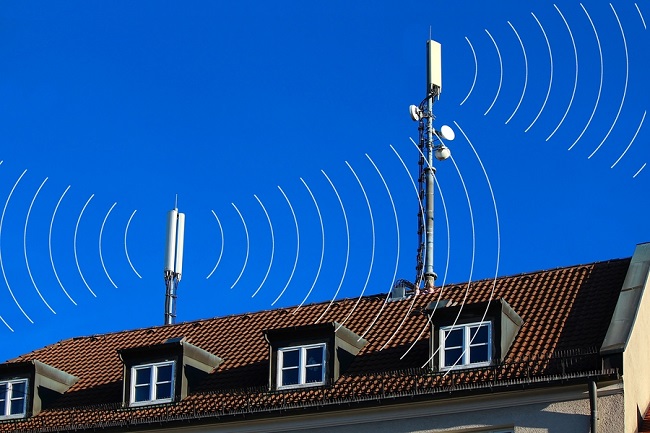- Make It Yourself Lavender Heart-Shaped Bath Bombs!
- 20 Things You Never Knew About “Down There”
- 12 Best Foods For Those Suffering From Arthritis Pain
- 12 Personal Hygiene Mistakes Almost Everyone Makes (Mom Never Told You About #4!)
- 15 Medicinal Plants And Herbs From The Cherokee People
- 12 Mind-Blowing Benefits Of Drinking Coconut Water During Pregnancy
- 12 Outstanding Winter Foods That Won’t Fatten You Up Like A Christmas Turkey
Are WiFi Allergies Real?

Photo credit: bigstock
In the hit AMC series Better Call Saul, actor Mike McKean stars as a reclusive lawyer, who rarely leaves the house due to his extreme sensitivity to electromagnetic fields. He works only by sun or lantern light, forbids anyone from bringing a cellphone into the house, and only goes outside wearing a special foil blanket to protect him from the harmful rays of electromagnetism. If he is exposed, he experiences piercing headaches, dizziness, and eventually blacks out.
Obviously, Chuck McGill is a fictional character, but the show brought attention to a rumored condition that has been either dismissed as a myth or completely ignored until now: Electromagnetic Hyper-Sensitivity, or EHS. An increasing number of people around the world are claiming to suffer from symptoms very much like those experienced by this popular television character.
Life for People With EHS
EHS is believed to be triggered by exposure to cell phone radiation and most importantly, Wi-Fi signals. Those who claim to suffer from this condition describe a wide variety of symptoms including headaches, searing pain in the teeth, nausea, and heart palpitations. A British woman claiming to suffer from EHS named Mary Coales stated that it feels like “being tasered in her mouth.” Those who claim to suffer from it insist that their symptoms intensify depending on their proximity to the electromagnetic signal’s source, such as a Wi-Fi router. Given how ubiquitous the presence of Wi-Fi is these days, it has made life for EHS sufferers very difficult. Movie theaters, cafes, hotels – all things the rest of us take for granted – are off limits to them.
What is interesting is that many EHS sufferers seem to develop their symptoms later in life, after already being exposed to Wi-Fi and cell phone signals for years, or even decades. It is currently unknown why some people can seemingly spontaneously develop these symptoms, even after years of exposure without problems.
Some people with EHS have found relief in the form of a special material called Aaronia Fabric, which filters out electromagnetic shields. The fabric, which is made from a combination of polyamide and silver, can be used to line the walls of a house, or in the case of Mary Coales, make a bonnet that allows her to walk outside unharmed. Other EHS sufferers have found their symptoms improve by replacing newer florescent light bulbs with old-fashioned incandescent bulbs. This suggests that some people with EHS are more sensitive than others if even mere light bulbs are triggering their symptoms.
Continue to Page 2

Photo credit: bigstock.com
Arguments For and Against EHS
The overwhelming majority of the medical establishment insists that there is no evidence to support a connection between Wi-Fi radiation and the symptoms of EHS. Wi-Fi routers, as they point out, produce electromagnetic radiation with a frequency that is 100,000 times less powerful than that of a microwave oven. Electronic devices, including Wi-Fi routers, mobile phones and tablets, emit non-ionizing radiation, which are considered too low-frequency to cause any health problems.
One problem with claims of EHS is the lack of consistency in symptoms reported. Symptoms seems to vary from individual to individual, with the only consistency being that they attribute their pain to electromagnetic fields. Almost all symptoms are self-reported rather than independently discovered. Studies on EHS have shown that participants displayed symptoms when they knew they were being exposed, but not when they were exposed to electromagnetic signals unknowingly. A double blind study by the World Health Organization in 2005, concluded that the symptoms did not correspond to exposure to electromagnetic radiation.
However, for those experiencing the symptoms the pain is very real, and no amount of studies saying otherwise will change their minds. In 2015, a 15-year old girl in Britain took her own life as a result of inescapable pain from EHS, according to the suicide note she left behind.
For now, government organizations like the Center for Disease Control (CDC) in the United States and National Health System (NHS) in the United Kingdom deny there is a link between Wi-Fi and mobile device radiation and the health problems described by those with EHS. Only the government of Sweden has recognized EHS as a real medical condition for which sufferers can seek disability.
An Oasis for Those Afflicted by EHS
For some dealing with the pain of EHS, their symptoms have become unbearable leaving them simply unable to continue with their lives as they once did. Some of these have found refuge in the tiny, isolated town of Green Bank, West Virginia in the United States. Wi-Fi, cell phones, TV transmissions, and radios are actually banned within the city limits because the village of around 150 people is located within a National Radio Quiet Zone. The zone was established so large radio telescopes could be used without interference from electromagnetic signals commonly used in the rest of the country. Since 2013, 36 people suffering from EHS have relocated here and have found a sense of peace.
READ ALSO: 11 Tips To Protect Yourself From Dangerous Cell Phone Radiation
For doctors, the jury is still out on what exactly is causing EHS. More research must be done to confirm why exactly people are reporting these disturbing symptoms. As Wi-Fi and mobile devices become ever more common, we can only expect the number of people experiencing EHS symptoms to increase.
References:
































